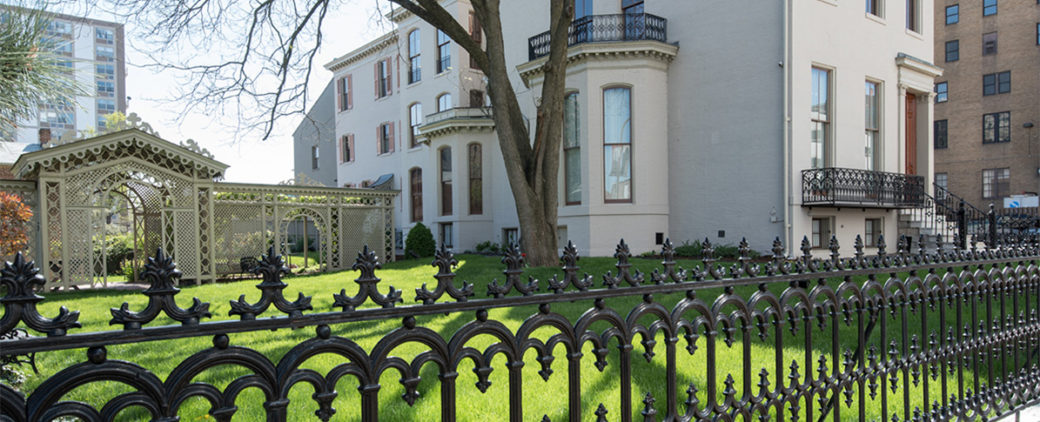Campbell Family
- The Narrative of Robert Campbell
Robert Campbell dictated this narrative to journalist William Fayel while en route to an Indian council at Fort Laramie in 1870. The narrative details his days in the Rocky Mountains between 1825 and 1835. - Rocky Mountain Letters of Robert Campbell
These letters were originally published in the Philadelphia newspaper The National Atlas and Tuesday Morning Mail in 1836. The five letters offer a fascinating look at the American West in the 1830s and give detailed descriptions of Robert’s building of Fort William (later Fort Laramie) and American Indian customs. - Robert Campbell’s accounts from 1832
An excerpt from Robert’s account book and ledger from 1832, the year he started his own fur company with fellow trader and friend William Sublette. - The Adventures of Captain Bonneville
Washington Irving’s classic tale of the American West in its early days chronicles the experiences of Robert and his fellow traders “whose adventures and exploits partake of the wildest spirit of romance.” - The Campbell House at Ulster American Folk Park
Robert’s birthplace Aughalane house is preserved as a museum in the Ulster American Folk Park in Northern Ireland. - Campbell Family plot
A description and photographs of the family burial plot at Bellefontaine Cemetery, St. Louis including details of the Campbell monument. - Slavery at the Campbell House
A story central to the history of the Campbell House and the City of St. Louis is that of slavery. Research has revealed that Robert Campbell owned a number of slaves over several years during his time in St. Louis.
Campbell House
- Campbell House record in the Historic American Buildings Survey (HABS) at the Library of Congress
This record contains detailed measured drawings of the Museum’s buildings and photographs of the exteriors in the 1930s and 1940s. - Campbell House nomination form for the National Register of Historic Places
St. Louis History
- Pictorial St. Louis 1876
This important book published in 1876 contains topographical views of St. Louis drawn by Camille N. Dry and edited by Richard J. Compton. This is largest panoramic map ever published and was dedicated to the famous Mississippi River bridgebuilder Capt. James B. Eads. The 110 plates in the book when trimmed and assembled create a panorama of the city measuring about 9 by 24 feet. - St. Louis Virtual City Project
This project utilizes interactive web technologies to explore the history of the City of St. Louis and the St. Louis region. Currently only the 1850s and the 1950s decades are active. The Project begins with a three-dimentional, interactive model of the city in the 1850s, and contains such places to visit as the courthouse. where you can learn about the Dred Scott case. The Virtual City will grow richer in detail as the St. Louis Regional History Project is expanded in time and space. - Distilled History
Award-winning local blogger and Campbell House docent combines two of his favorite things — history and spirits — in an engaging and informative look at St. Louis, Campbell family and general American history. - 1820 Colonel Benjamin Stephenson House
Located just a few clicks across the river into Illinois from downtown St. Louis, the Stephenson House is an important landmark linking the early history of Edwardsville, Illinois to the earliest days of the Illinois territory ca. 1809. A stunning example of early-nineteenth century Federal architecture, the Stephenson House has been beautifully restored and offers a wide array of education programs. - Landmarks Association of St. Louis
St. Louis, bequeathed with a wealth of historically and architecturally significant buildings, owes the conservation and adaptive reuse of much of that inheritance to Landmarks Association of St. Louis, Inc. Organized in 1958 and incorporated as a non-profit in 1959, Landmarks is the primary advocate for the region’s built environment. - St. Louis Historical Art and Architecture Walking Tours
Join expert guide and historian Maureen Kavanaugh for a walking tour of downtown St. Louis. Maureens tours are “a celebration of city buildings and public art on a grand scale. St. Louis is baseball and bratwurst, toasted ravioli and the blues. It’s home to the oldest steel-frame skyscraper in the world and the tallest man-made monument in the United States.” Sites and subjects covered are as diverse as the ancient Mississippian Indian Mounds of St. Louis and the Gateway Arch.


